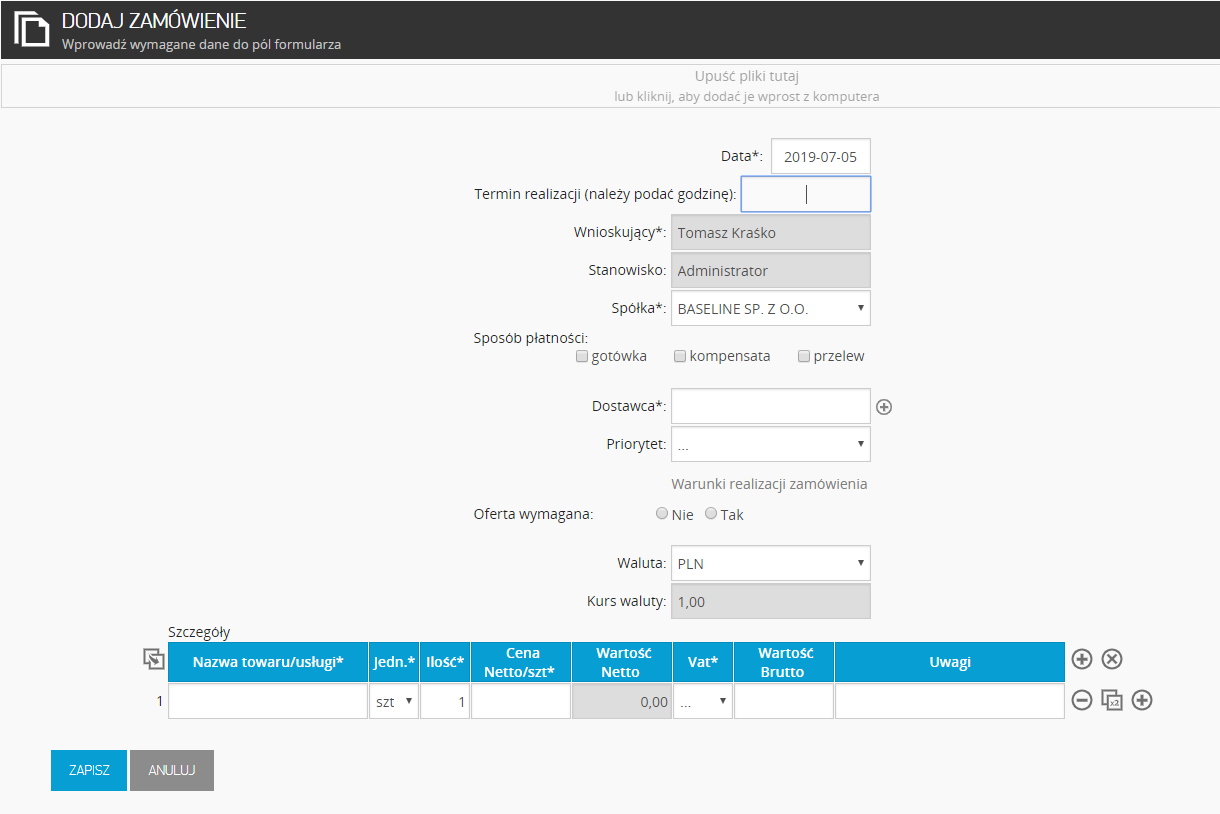The main goal of any enterprise operating on the free market is to achieve the highest possible profit. On the one hand, companies strive to increase sales, but on the other hand, more sales will not pay anything if the costs in the company get out of control. Therefore, controlling expenses and keeping them at an appropriate level has a very significant impact on the profit making.
Expenses for each company start with the need. The need is reported by an employee or department. It may concern, for example, equipment, office supplies necessary for work or goods needed to produce the final product that is sold to the customer.
Usually, another department / employee is responsible for placing an order. After receiving the goods, an invoice appears in the company. Unfortunately, at this point it is too late to control costs, because the goods were picked up and the invoice issued.
Therefore, it is important to plan the expense in advance, justify it and obtain the approval of the superiors.
Many organizations are coping with the process of circulation of Demand / internal order to the company. The process can be carried out using the traditional method, by completing a paper application and obtaining the necessary signatures of merchants or, going with the times, using an IT system that will streamline and shorten the circulation process itself. The argument that speaks in favor of the latter is very often convenience, speed of action and the possibility of automatic verification of costs in relation to the assumed budget of the unit.
How does it look?
The employee submits Inner order in the system, in which he specifies the product / service he needs, the supplier, the number of items and the estimated price. User may also include information about which project the order refers to or simply indicates its department. A very important part of the application is justification for incurring expenditures, which will play a fundamental role during its opinion.
The next action in the process is acceptance (usually by the direct superior or project manager) and, depending on the amount of expenditure, the acceptance of the senior level at the level of the Board.
After acceptance, Inner order goes to implementation, where the person responsible for the physical order orders the product / service submitted. Sometimes it is done by the contracting authority itself.
When an invoice is delivered to the company, it should be linked with a proper Inner order, and because Inner order has already passed the acceptance path, only invoices, the amount of which is greater than the invoice, should require additional acceptance. Of course, in practice, there may be situations where several invoices will appear for one order or one invoice may cover many orders. Proper system configuration should deal with such cases.
What are the benefits for the company?
The benefits of implementing the Inner orders workflow will be gained by the entire organization, from the level of the employee to the president of the organization – of course, each of them on a different level.
1. Streamlining the process – the applicant will get the necessary approvals faster than he would by collecting signatures on a paper document or e-mail.
2. Saving time – the applicant will get the necessary approvals faster than he would by collecting signatures on a paper document or e-mail. Acceptance within a mobile application can take place even if the supervisor is outside the office – it will speed up the decision process and the product will be ordered faster.
3. Work automation – the Inner order’s cycle is system controlled, therefore the process participants are not able to refer the request to the wrong person. Business rules for a cost exceeding the set ceiling will force acceptance of the second or third level, and automatic control of implementation times improves overall timeliness and eliminates downtime.
4. Budget control – the supervisor can control the needs of his department and employees, accepts or rejects the cost before it is incurred, affects and controls the budget at any time.
5. Better decision making – dedicated statements allow you to avoid anomalies at the financial level, including unjustified needs and abuses.
Contact us to get more info about implementation and licence costs. Go to the contact page.



